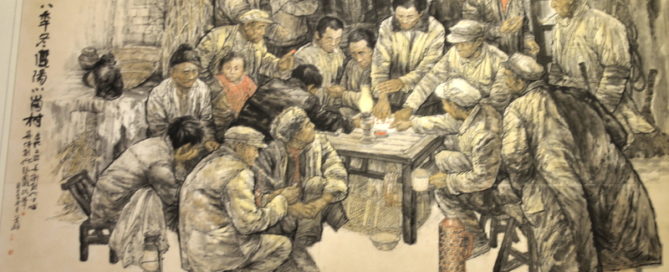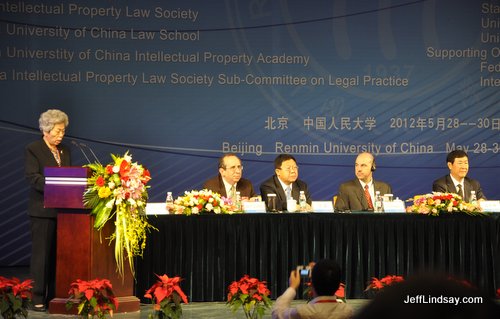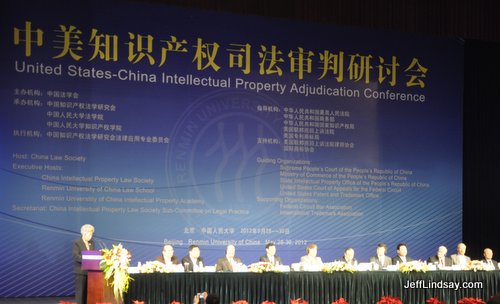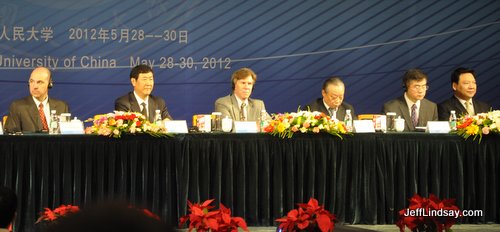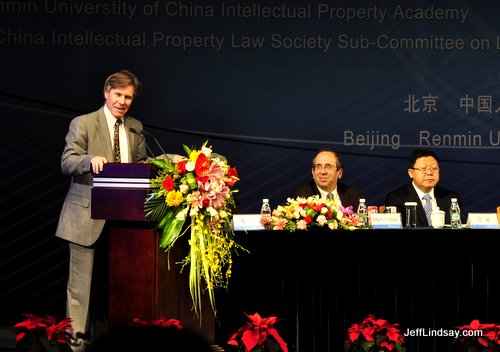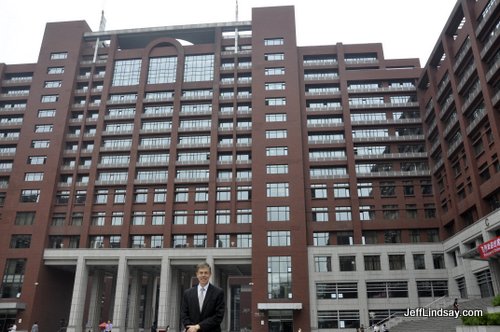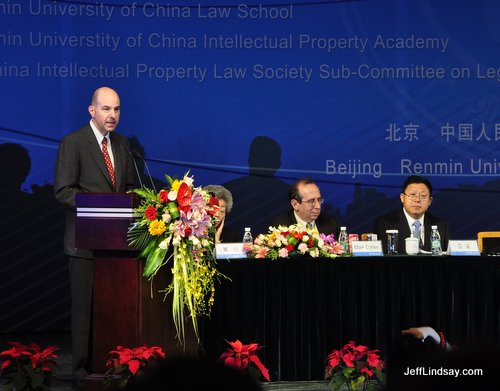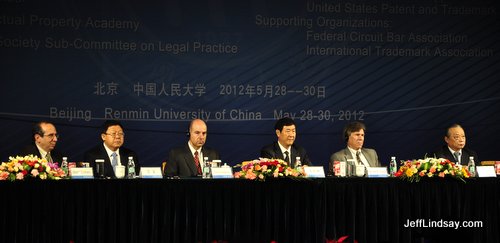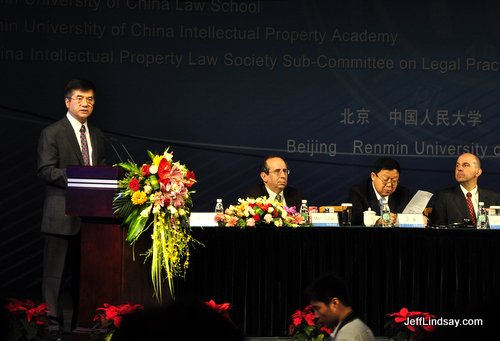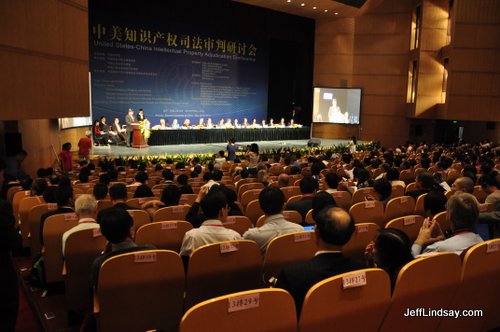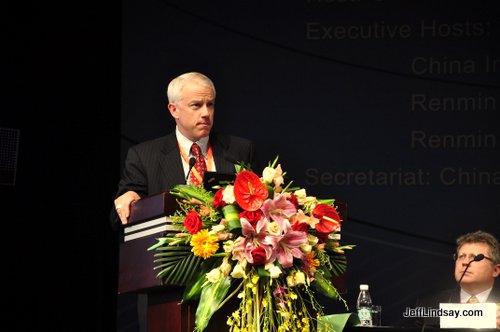The Thunder of China’s Quiet Second Revolution: How a Few Starving Farmers Brought an Economic Boom by Abandoning Collectivism
The following essay was originally published as “Desperate Heroism and the Thunder of a Quiet Revolution: The Rise of China’s Economy and IP System” on Nov. 11, 2021 on the intellectual property site, IPWatchdog.com.
On October 16, 2021, as I contemplated lessons from my nine years in China, the Financial Times broke a story that rocked the world—especially the U.S. military: “China tests new space capability with hypersonic missile.” China’s recent launch of a nuclear-capable rocket that circled the globe at high speed “took US intelligence by surprise.” Military experts quickly noticed that Chinese innovation in hypersonic weapons “was far more advanced than US officials realised.” As I’ve seen happen many times in coverage on innovation in China, our mainstream media is now downplaying China’s achievement (“not much of a surprise,” per the New York Times, and nothing but old Russian technology per Foreign Policy). It’s similar to the objections raised for decades about IP and innovation in China: low quality, just copying, nothing to be worried about. Yet in industry after industry, China is taking a leadership position in technology and its international patents that can’t be won by copying. It comes from leading.
Downplaying Chinese innovation may make the West feel more secure, but it is a security based on illusion. Whether one likes China or not, its leadership role in innovation and IP cannot be wisely ignored, as we should learn from their hypersonic missile surprise, and surprises in hundreds of fields ranging from nanotech to paper straws.
My nine years in China taught me that China is serious about innovation and serious about leading in many areas. As I learned in many experiences, the capabilities of Chinese engineers, scientists, programmers, manufacturers, architects, designers, physicians, artists, financiers, and entrepreneurs can far exceed what the West thinks it knows about China. China’s accomplishments happening before our eyes or above our skies can catch us off guard, whether they are in technical fields like biotech, green energy, transportation such as high-speed rail, solar power, mining technology, or nanomaterials, or in the realm of intellectual property (IP) and innovation itself, or in business strategy, political strategy, and numerous other areas. How did this happen? What changed in an impoverished, hungry nation to defy all expectations?
Part of the answer might be found in the heroic defiance of a few desperate farmers in the small village of Xiaogang who helped transform China. Their story teaches us old lessons about property rights and economic liberty that we may need to reconsider for our own future. Xi Jinping visited that village in 2016 and declared, “The daring feat we did at the risk of our lives in those days has become a thunder arousing China’s reform, and a symbol of China’s reform.” I believe you cannot understand China’s journey from poverty to leading the world in IP without knowing this rarely told story.
My Road from Shanghai to Xiaogang
My wife and I began our adventure in China in 2011 when I joined Asia Pulp and Paper as Head of Intellectual Property for what was supposed to be a one-year assignment in Shanghai, followed by a return to be part of North American operations. Fortunately, it became a much longer stay in a beautiful country and the most exciting city I’ve lived in. I wondered how Shanghai and much of China could be so prosperous, free of the economic problems of Cuba, Russia, the former East Germany, North Korea, and other lands that had embraced Marxist-Leninist ideology. Obviously, the economic reforms launched by Deng Xiaoping in the late 1970s and 1980s had succeeded, but there was a backstory that touched me deeply when I learned of it. It would lead my wife and I to make a pilgrimage to an obscure little village in Anhui Province.
My first hint of the Xiaogang (pronounced like “shao gong”) story came while reading Michael Meyer’s In Manchuria: A Village Called Wasteland and the Transformation of Rural China (New York: Bloomsbury Press, 2015). Meyer briefly recounts the story of how China overcame the problem of starvation and transformed to economic success. He first reviews the challenges China faced in the 1950s, when the visions of socialism met the reality of poverty and hunger and over 20 million, perhaps over 40 million, died of starvation during the “Great Famine.” Part of the problem was collectivism (Meyer, pp. 214–5). When farmers have their food confiscated and have to live off small rations, a painful reality sets in: there is no incentive to produce more. In fact, hard work burns more calories and will just make you hungrier. The abuse of the system by those with power over redistributing wealth also led to more discouragement and misallocation of resources. Entrepreneurs and those who were relatively successful would be punished for being “rich,” resulting in the loss of much talent and capital that China needed. The misallocation of resources and the crushing of incentives to make products was not just a theoretical nuisance: it led to the starvation of tens of millions.
Lest defenders of communism think such claims come only from hostile partisans, consider the memoirs of a loyal supporter of Mao, Ji Chaozhu, the man who stood at Mao’s side on many occasions as his translator. His book is The Man on Mao’s Right: From Harvard Yard to Tiananmen Square, My Life Inside China’s Foreign Ministry (New York: Random House, 2008). Though a loyal communist, his tales of the disaster of the Great Leap Forward and the Cultural Revelation incidentally reveal the chaos and starvation that occurred before China’s communism added its essential “Chinese characteristics.” Reading it, I could only mourn for the farmers who were given yellow dirt instead of the fertilizer they needed during the Great Leap Forward, and whose vital iron tools were sometimes sacrificed and turned into worthless scrap metal as villages tried to meet ridiculous quotas for collective steel production.
Meyer’s In Manchuria continues with the story of a secret and illegal scheme that would eventually lead to the overthrow of pure collectivism and bring the economic salvation of China. The scheme was forged in the embers of desperation in the tiny village of Xiaogang in Fengyang County, Anhui Province, not far from the large city of Bengbu. My wife and I with two friends would make a pilgrimage from Shanghai to Xiaogang. Few foreigners have ever heard of the village.
In 1978, China was still reeling from the Cultural Revolution, though that came to an end with the death of Mao in 1976. For the villagers in Xiaogang, it was obvious that something besides collectivism was needed, for the harder one worked, the faster one starved. Twenty-five percent of their county had starved to death during the Great Famine from the Great Leap Forward, and over 67 of the 120 villagers in Xiaogang had starved during that time. Now they were starving again. One man, Yan Hongchang, a 29-year-old father of four and deputy leader of the village work team, decided to make a change that would put his life on the line. Meyer describes the scene:
On the night of November 24, Mr. Yan summoned the heads of the village’s twenty families to a secret meeting. The village accountant was deputized as a secretary, and on paper torn from a child’s school exercise book transcribed a seventy-nine-word pledge to divide the commune’s land into family plots, submit the required quota of corn to the state, and keep the rest for themselves. “In the case of failure,” the document concluded “we are prepared for death or prison, and other commune members vow to raise our children until they are eighteen years old.” The farmers signed the document and affixed their fingerprints.
Thus began China’s rural reform.
Today a large stone monument to the pact greets tourists to the village. But in the spring of 1979, a local official who learned of the clandestine agreement fumed that the group had “dug up the cornerstone of socialism” and threatened severe punishment. Thinking he was bound for a labor camp, Mr. Yan rose before dawn, reminded his wife that their fellow villagers had promised to help raise their children, and walked to the office of the county’s party secretary. But the man privately admitted to Mr. Yan that he knew, since the pact had been signed, the village’s winter harvest had increased sixfold. The official told Mr. Yan he would protect Xiaogang village and the rebellious farmers so long as their experiment didn’t spread. (Meyer, pp. 215-216)
But other villagers saw something unusual was going on and made inquiries. The system quickly spread from village to village, leading to a boom in Anhui Province’s agricultural production, with a 600% increase in production, maybe more. Yan Hongchang’s heroism came at just the right time. Rather than being punished as a criminal, Yan would be ultimately be recognized as a hero who inspired Deng Xiaoping. The voice of a few farmers became a thunder, as Xi Jinping said, that roared across China, catalyzing a transformation from poverty to abundance.
It would take time for the political obstacles to be overcome, but the unmistakable success of this second revolution in China could not be denied. Deng Xiaoping would face criticism, but had the courage to bring about new policies over the next few years formalizing the Household Contract Responsibility System, often called da baogan, which allowed families to farm their own allocation of land. They had to give a portion to the state, but the rest they could eat or sell at unregulated prices. Fifteen-year leases to farm plots were introduced in 1984 and then became 30-year leases in 1993. Agricultural taxes were abolished in 2006. (Meyer, pp. 215-217). For details on the rapid changes that took place, see chapter 5, “Disbanding Collective Agriculture,” in Jonathan Unger’s book, The Transformation of Rural China (New York: Routledge, 2002). Also, see the recent interview with Yan Hongchang recorded by Ni Dandan in “The Farmer Who Changed China Forever“ (SixthTone.com, Aug 21, 2018).

The signing of the Xiaogang da baogan contract is captured in a painting displayed at the spacious Da BaoGan Memorial Hall in Xiaogang, a short walk from the easily-overlooked home of Yan Hongchang, which is the key place to visit if you go there. The original of this painting is in a museum in Beijing.
Soon the principle of “household management” would become enshrined in the Chinese Constitution, Article 8:
Working people who belong to rural collective economic organizations shall have the right, within the scope?prescribed by law, to farm cropland and hillsides allotted to them for their private use, engage in household sideline production, and raise privately owned livestock. [emphasis added]
This recognition of a form of property rights for farmers was a vital step in China’s economic resurgence. What is today proudly called “socialism with Chinese characteristics” has traits that seem to resonate with principles of economic freedom and property rights. That economic revolution not only replaced famine with abundance, but has lifted China in many ways, opening doors for intellectual property rights, which also got a foothold in 1984.

The home of Yan Hongchang, where the Xiaogang contract was signed on Nov. 24, 1978.

The windowless room where the Xiaogang contract was signed. We must never forget the courage and desperation of that tiny group of farmers huddled together in a small room with no windows – an important detail, for it meant that local government informants could not walk by and listen to the meeting. The contract they signed specified that if any of them were caught, the others would raise their children. But they would rather risk death by execution than stand by and watch their families continue to starve. I’m so grateful for what they did.
From Agricultural Reform to the Rise of Intellectual Property
Allowing people to control and purchase property, even if still formally owned by the government, and to prosper from their work and their investment of capital, created an environment of relative economic liberty. As collective communes were finally discarded in favor of letting farmers control their own allocations of land and profit from their work, the recognition of property rights also began spreading to the realm of intellectual property. An overview of the early rise of China’s patent law is told by Bonan Lin, Jon Wood, and Soonhee Jang in “Overview of Chinese Patent Law,” 35th International Congress of the PIPA, Toyama, Japan, Oct 19–22, 2004.
China passed its first patent law in 1984 and then created its Patent Office in 1987 under the leadership of a man I deeply admire, Dr. Lulin Gao. Drawing upon his familiarity with the German IP system, he paved the way for the creation of the Patent Office and became its Commissioner, serving from 1987 to 1998. Then he led the way in establishing the State Intellectual Property Office (SIPO) and served as its first commissioner. While the patent system in its infancy had weaknesses, China has steadily strengthened its IP laws, IP awareness, and IP training. What I saw year after year in China was an urgent effort to strengthen IP laws and IP enforcement, including the establishment of specialized IP courts and programs across the country aimed at helping companies and officials strengthen IP. Patent quality is steadily improving, as is innovation.
China’s IP activity and achievements have come at a nearly hypersonic pace, catching the West off guard. China now leads the world in Patent Cooperation Treaty (PCT) patent applications. These expensive international applications are usually presumed to be a sign of quality innovation. When China’s domestic patents began to climb rapidly and surpass the filings of many nations, Western voices often suggested that China’s relatively low number of PCT filings revealed that innovation in China was nothing to take very seriously. That argument now lacks any merit. But it still seems to be “common knowledge” in many corporate and government circles that innovation in China is weak and that China relies on copying. A little patent searching will show that China’s patent filings in so many areas, from graphene to paper straws, exceed those in the United States and other nations by such great margins and with such interesting advances that copying utterly fails as an explanation. Yes, copying has occurred, but it’s the value-added innovation on top of learning from others that makes China such a powerhouse. This can no longer be ignored or be downplayed, and hopefully China’s recent hypersonic shot-over-the-bow will help strategists reconsider the power of China to lead, not just copy, in numerous critical areas—including the IP system itself.
Copyright © Jeff Lindsay, 2021

